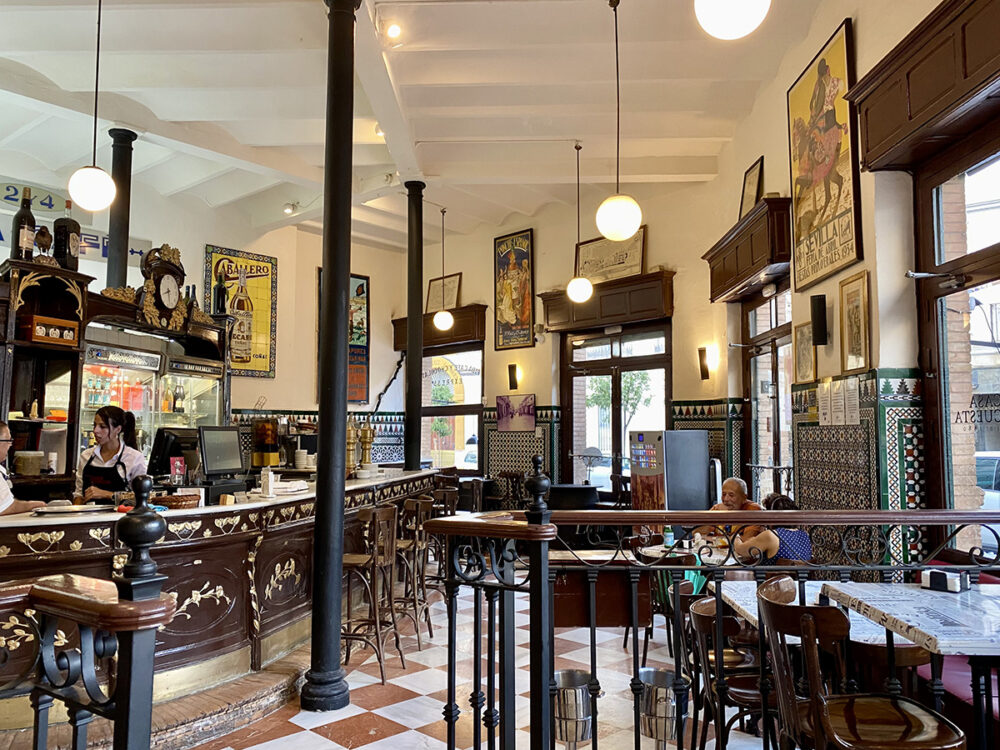Sevilla’s Triana neighbourhood is a picturesque, azulejo tile-adorned setting for flamenco performances, a variety of dining experiences and captivating museums.
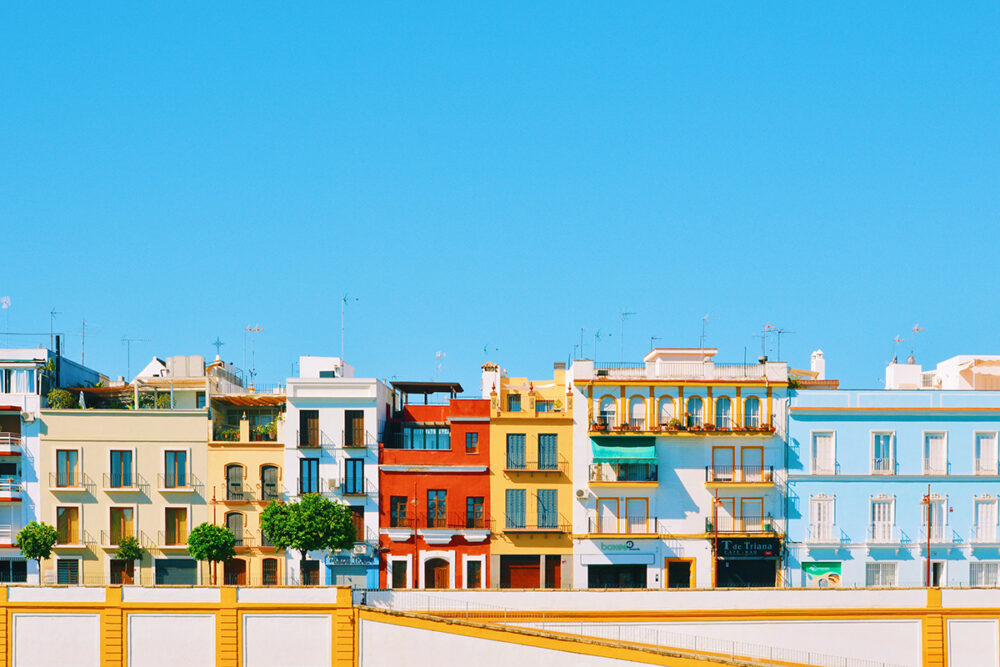
Calle Betis, Triana (Photo: ijclark via Flickr / CC BY 2.0)
Triana, nestled on the West Bank of Seville’s Guadalquivir River, boasts a rich and multifaceted history. This vibrant neighbourhood was historically one of the most important places in the development of flamenco, as well as a hub for ceramics and pottery since the Moorish era, and a headquarters for the authorities responsible for some of the darkest acts of the Inquisition.
Today, Triana, easily reached via the majestic Isabel II Bridge from the city centre, effortlessly combines its historical roots with modern charm. Its streets are adorned with stunning azulejo tiles, a hint of the neighbourhood’s past gracefully interweaving with the present, crafting a unique tapestry of experiences for those keen to explore its storied streets and immerse themselves in its rich history.
Things to do
Explore Triana’s gritty past at the Museo del Castillo de San Jorge (also known as the Spanish Inquisition Museum), beneath Triana Market. Originally a 10th-century Moorish fortress guarding Seville along the Guadalquivir River, it later became the headquarters of the Spanish Inquisition from 1481 to 1785. Excavated ruins now house the museum, where you’ll uncover the Inquisition’s dark history through films and historical insights. It’s a concise yet enlightening journey into Triana’s significant past. For those wishing to further their insight into the Spanish Inquisition, pay a visit to Callejón de la Inquisición, where prisoners were often led on their way to the Castillo de San Jorge prison.

Cerámica Santa Ana Rodríguez Díaz (Photo: Rachel Naismith)
Lighten things up (figuratively and literally) at the ceramic district, which is defined by its beautiful walls and road signs adorned with colourful azulejo tiles, and the brightly-coloured Monumento a la Alfarería y la soleá (a monument celebrating the area’s potters and ceramicists). The heart of this ceramic hub is the ceramic museum, Centro Cerámica Triana, housed in the former ceramic factory, Cerámica Santa Ana Rodríguez Díaz. Pass through a charming inner courtyard and a façade inspired by Moorish Celosía (an ornate type of latticework), to explore the history of Triana’s deep connection to ceramics. Discover meticulously restored 16th-century kilns and potter’s wheels, as well as captivating temporary and permanent collections.
As you wander the streets surrounding Centro Cerámica Triana, you’ll encounter a treasure trove of ceramic boutiques, each offering unique creations. On Calle Callao, Cerámica Triana showcases hand-painted plates, jugs and bowls, while just opposite the museum on Calle Antillano Campos, Cerámica 1920 provides tailor-made ceramic and mosaic painting courses.
A word of warning: Photography isn’t allowed inside the exquisite Cerámica Santa Isabel (founded in 1789) on Calle Alfarería, but its beauty is truly tempting. Here, you’ll be treated to a visual feast of handcrafted plant pots and tiles, featuring a stunning array of colours and patterns.
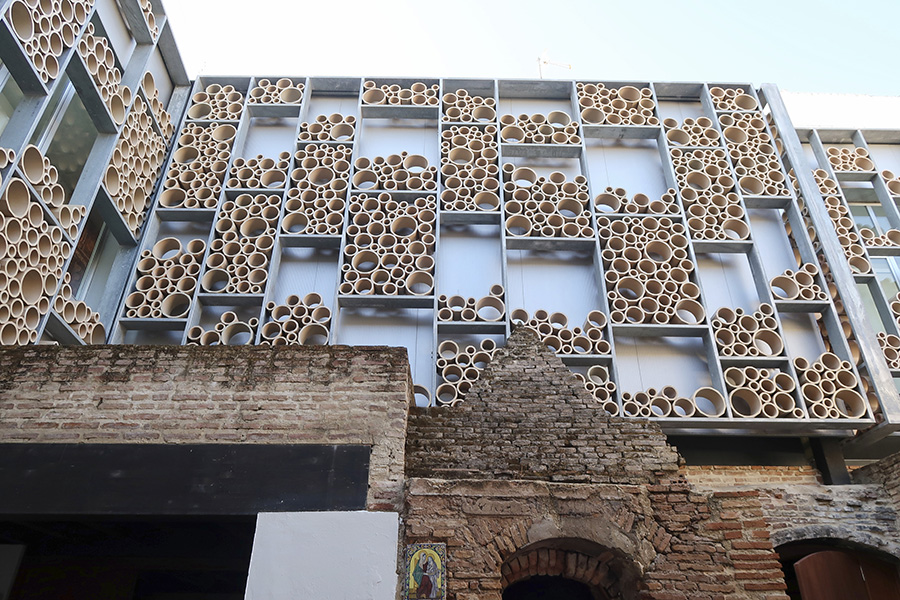
Centro Cerámica Triana (Photo: José Antonio Montero Fernández via Flickr / CC BY-SA 4.0)
For an extra dose of splendour and beauty, make your way to the Museo de la Hermandad de la Esperanza de Triana on Calle Pureza. Inside, you’ll discover jewels, cloaks, intricate sculptures, and golden ornaments, all associated with the culturally significant Brotherhood of Hope of Triana, whose history traces back to the 15th century. Just a short two-minute stroll from there, you’ll encounter the Parroquia de Santa Ana (Saint Anne’s Church). This 13th-century church, Seville’s oldest, showcases striking Gothic-Mudéjar features, an abundance of gilded details, intricate carvings, and an impressive collection of religious artwork.
If Seville’s sweltering heat has you craving a refreshing break or if you’re simply yearning for an adventurous twist to your holiday, consider giving Paddle Surf Sevilla a try. They offer brilliant stand-up paddle boarding experiences along the Guadalquivir River. Their group lessons are a fantastic way to have some fun. And for an added touch of magic, don’t miss their sunset paddles— an excellent way to unwind and soak up the serene beauty of the river in a relaxed setting.
Markets & Shopping
No trip to Triana is complete without a visit to the historic Mercado de Triana (C. San Jorge, 6), a culinary treasure trove dating back to the 19th century. Situated at the end of the Isabel II Bridge, it’s a prime spot to explore a wide range of fresh produce. At Charcuterie J Alfredo, you’ll find aged Spanish hams and charcuterie suspended from the ceiling, where friendly servers eagerly guide you through their offerings.

Jamonería inside Mercado de Triana (Photo: Rachel Naismith)
The market is the perfect place to purchase gourmet items like sweet or spicy paprika, as well as reasonably-priced saffron to bring a taste of Spain back home. But it’s not just about ingredients; the market buzzes with food stalls and tapas bars where you can indulge in traditional Andalusian dishes and local specialties. For unforgettable rice dishes, head to the no-frills Arrocería Criato (Pl. del Altozano), where everything is made fresh to order using ingredients sourced from the market that day. If you’re not up for a complete meal, Jamoneria Jose Luis Romero (Pl. del Altozano) offers a vibrant setting to enjoy some manchego cheese or jamón ibérico, along with a refreshing Spanish beer.
For those looking to roll up their sleeves and get hands-on, there’s the Taller Andaluz de Cocina cooking school, located within the market. Here, you can participate in Spanish cooking classes led by expert chefs, indulge in Spanish sherry tasting sessions, and embark on guided tours of the market.
On weekends, the Paseo de Arte, an arts and crafts market, comes to life between 9am and 2pm. Accessible via the charming Betis Street, which overlooks the river, this market features an array of handmade goods, including textiles, paintings, jewellery, fans, and even handmade clothing.

Making gazpacho with the Taller Andaluz de Cocina cooking school (Photo: Rachel Naismith)
Eat & Drink
Without doubt, one of the best things to do in Triana is eat and drink: whether you’re looking for traditional Andalusian fare or a modern take on tapas, the area is brimming with tasty spots. Calle Betis, with its vibrant coloured houses and panoramic views, is an ideal spot for pre-dinner drinks. Meanwhile, on Calle Antillano Campos, Abacería El Mercader de Triana impresses with its wine selection. The owner, fluent in English, eagerly guides you through the wines. They also feature a daily-changing menu of delectable fish dishes, adapting to the season and market availability, perfect for a lighter meal.
Just steps from the wine bar, a quaint cobbled alley leads to Las Golondrinas, a tiny rustic tapas bar serving traditional Andalusian plates. If you don’t reserve a table on the small mezzanine, anticipate standing and mingling with locals who energetically place their orders at the bar. The ambiance is lively, the decor charming, and the food, though straightforward, is delicious. Don’t miss the champiñones con alioli (ideally paired with an ice-cold Cruzcampo beer).
Casa Cuestro (C. Castilla, 1), founded in 1890, immerses you in authentic Spanish dining with its art-nouveau décor. Their diverse menu spans from hearty stews to homemade desserts and fresh-as-you-like salads. Just a stroll away on Calle Rodrigo de Triana, Taberna de Triana shares this traditional charm, adorned with pictures of famous Spanish bullfighters. Don’t leave without trying the house specials, including molten blue-cheese croquettes and berenjenas con miel (tempura aubergine with honey glaze). The friendly owner is always ready with excellent food recommendations.
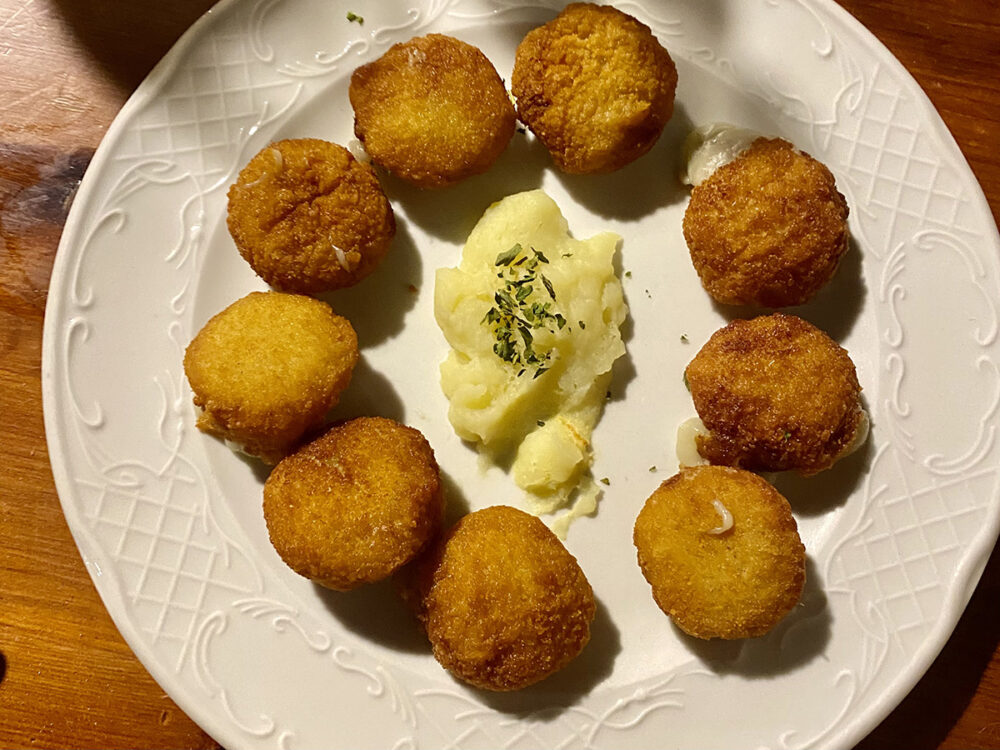
Blue cheese croquettes from Taberna de Triana (Photo: Rachel Naismith)
At Típico Tapas on Calle Pagés del Corro, you’ll discover a modern twist on traditional tapas. Plates are promptly placed on the countertop, and orders are called out rather frenetically for your collection (no table service, but it adds to the fun). Enjoy their reinvented classics like the beetroot-infused salmorejo topped with feta cheese and crunchy deep-fried gyoza. The atmosphere is relaxed, and service is unhurried—perfect for a leisurely long lunch.
Where to Stay
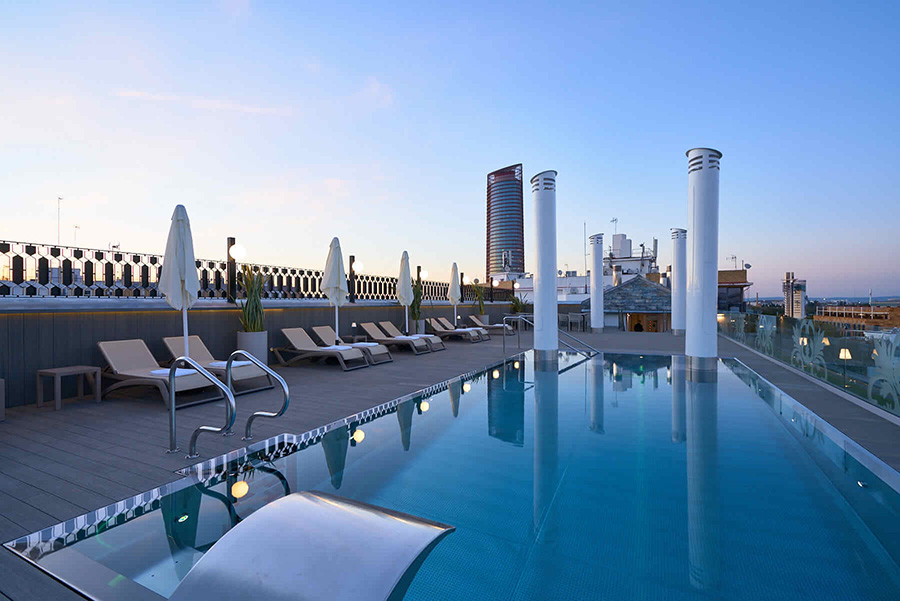
Hotel Monte Triana (Photo: courtesy of hotel-montetriana.com)
Triana offers a variety of accommodation options to suit different budgets. If you’re seeking upscale and glamorous stays, both Hotel Zenit Seville (C. Pagés del Corro, 90) and Hotel Monte Triana (C. Clara de Jesús Montero, 24) are excellent choices. They’re conveniently located in central Triana, just a 15-minute walk from the city centre. These hotels feature rooftop swimming pools, elegantly decorated spacious rooms, and exceptional service.
Alternatively, Pureza Triana 88 offers spacious, air-conditioned apartments located just 500 meters from the Isabel II bridge, allowing easy access to the city centre. It also boasts a charming terrace for late-night drinks with panoramic views.
Travellers on a budget flock to Triana Backpackers Hostel (C. Rodrigo de Triana, 69), a welcoming spot nestled inside a traditional Andalucía house. A five-minute walk from the bridge and surrounded by cafes and restaurants, this budget-friendly option offers bright and immaculately clean accommodations.
